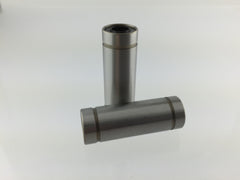Oh and there is something else too - forgot to mention it. As of the last two PTFE coupler changes, I noticed that when the filament passes the spot where the coupler, the metal collet and the Olsson Block meets, it snags onto something and has a very hard time to pass. Then when the pressure builds up, it snaps and passes with great speed. This can't be good under-extrusion wise. I wonder what it could be. I have checked both the coupler and the collet and also the Olsson Block. The connection should be smooth. I can't really test for gaps because there is no way to look "inside" where the filament passes while it is assembled.
I have searched for an endoscope camera but there is nothing consumer grade to be found that's thin enough.
I should have counted how many times I have disassembled the head until now. I think I am close to the three digits ![]()





























.thumb.jpeg.0b7a05eafc09add17b8338efde5852e9.jpeg)
Recommended Posts
Top Posters In This Topic
135
46
41
31
Popular Days
Nov 20
35
Nov 18
21
Oct 2
16
Oct 12
15
Top Posters In This Topic
Nicolinux 135 posts
gr5 46 posts
visu-al 41 posts
mevander 31 posts
Popular Days
Nov 20 2014
35 posts
Nov 18 2014
21 posts
Oct 2 2014
16 posts
Oct 12 2015
15 posts
Posted Images
Nicolinux 288
Alright I got an humidity scale (or whatever it is called). When I put it right in front of the UM2 it measures 68%. On top of the UM2 it is even more - 71%. I guess that's quite a lot.
@DoctorH: What did you measure? It seems my entire appartment is pretty "wet". There is no spot that's under 60%...
Link to post
Share on other sites